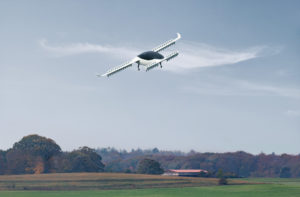
(News and Editorial. Not to be construed as investment advice.) It’s been a big season for publicly traded advanced air mobility companies. Chinese manufacturer EHang went public early in the game, hitting Nasdaq on September 19, 2019 (NASDAQ:EH): but this year, they’ve gotten some company. US-based Joby Aviation went public last month, commencing trading on the New York Stock Exchange on August 11, 2021. (NYSE: JOBY) German company Lilium started trading on the Nasdaq on September 15, 2021. (NASDAQ: LILM). US-based Archer rang the opening bell in NY today, September 20, 2021, as they join the New York Stock Exchange. (NYSE: ACHR)
This is not a comprehensive list. Larger, already publicly traded companies like Hyundai (OTCMKTS: HYMTF) are also developing in the sector: many more are investing in advanced air mobility companies. Whether you call them urban air mobility vehicles, passenger drones (although most current vehicles are designed to be crewed, at least until such time as automated operation is legal), advanced air mobility (AAM) solutions, advanced air vehicles (AAV), passenger vertical take off and landing (VTOL), or something else, the growth of environmentally clean aerial mobility solutions is nothing short of stunning.
It’s not surprising that the list of publicly traded advanced air mobility companies is also growing. The stock market isn’t always right, but nor is it particularly patient. The public funding indicates that investment companies, at least, see advanced air mobility solutions as a reality sooner rather than later.
It’s a view shared by the FAA and other aviation authorities around the world. At a keynote speech at Commercial UAV Expo earlier this month, Chief Administrator Steve Dickson said that urban air mobility was only a few years away. In South Korea, authorities are pursuing demonstration flights and readying communities for urban air mobility options. In Japan, airspace authorities are creating a framework to support advanced air mobility regulations.
The need is clear. In a world where road traffic limits economic growth and contributes to pollution and global warming, moving traffic into the air for public or private transportation – by means of environmentally cleaner vehicles – is an appealing solution to an increasingly urgent problem. Publicly traded advanced air mobility companies will receive the funds they need to develop, test, and certify vehicles. Next, industry observers can expect to see contributing players like unmanned traffic management solutions and infrastructure companies grow quickly too.

Miriam McNabb is the Editor-in-Chief of DRONELIFE and CEO of JobForDrones, a professional drone services marketplace, and a fascinated observer of the emerging drone industry and the regulatory environment for drones. Miriam has penned over 3,000 articles focused on the commercial drone space and is an international speaker and recognized figure in the industry. Miriam has a degree from the University of Chicago and over 20 years of experience in high tech sales and marketing for new technologies.
For drone industry consulting or writing, Email Miriam.
TWITTER:@spaldingbarker
Subscribe to DroneLife here.







[…] extra about Superior Air Mobility (AAM): NASA undertaking, publicly traded corporations, and seek for public […]